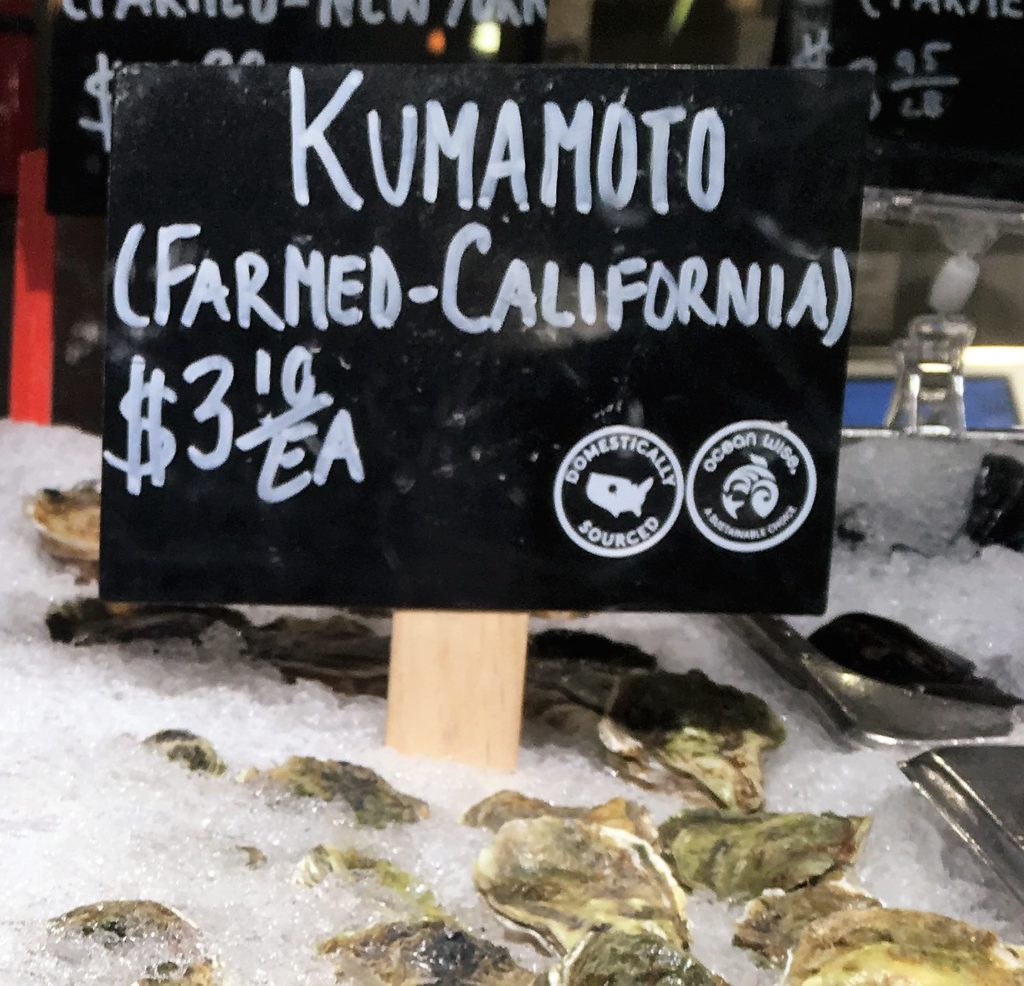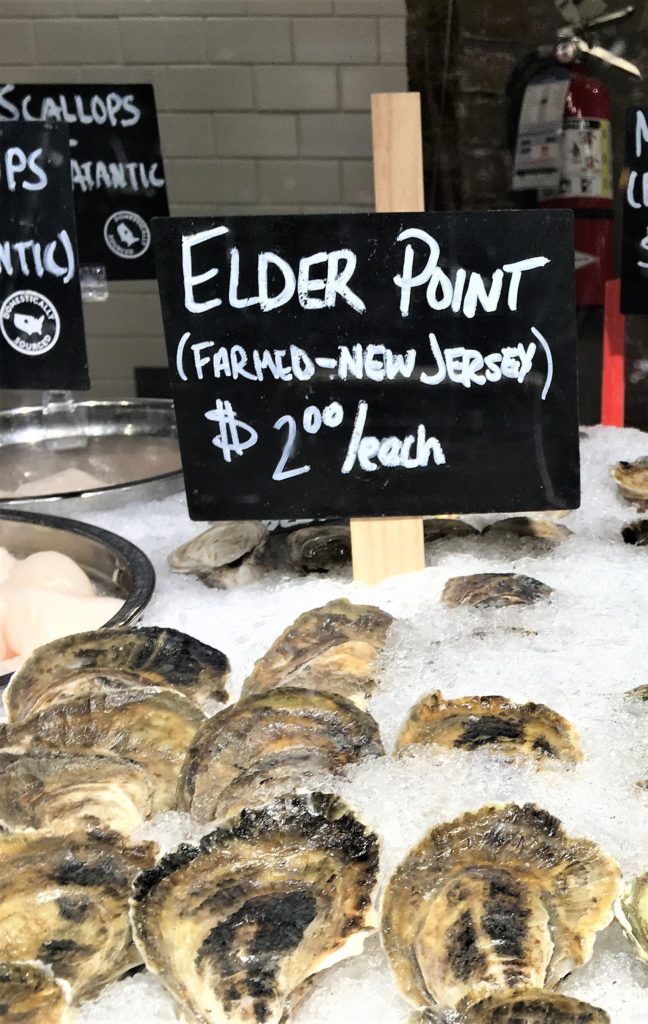Oyster types and species
The five oyster types and species
There are different oyster types and species. Oysters are not just oysters. They taste different depending on where the oysters have grown up. The sea's content of salt and minerals leaves its mark on the oyster. Oyster connoisseurs speak of the 'merrior' of oysters, just as wine connoisseurs speak of the 'terrior' of wine.
The East Coast oyster eaten in New York, tastes different than the West Coast oyster eaten in San Francisco. The salt content is higher on the east coast in the Atlantic than on the west coast in the Pacific.. They are saltier in New York than in San Francisco.
Similarly, the oysters from Brittany in France taste more powerful than the oysters coming from the French part of the Mediterranean.
There are basically five oysters species.
The European flat oyster (Ostrea Edulis),
The Pacific oyster (Crassostrea Gigas),
The Kumamoto oyster (Crassostrea Sikamea),
The Eastern/Atlantic Oyster (Crassostrea Virginica)
The Olympia Oyster (Ostrea Lurida).
The dominating oyster in the world is the Pacific oyster, or the Gigas oyster as it often is called. It is rather easy to farm, and growth faster than most other oyster species. And - like the other oyster species - it tastes well. Especially in Europe most oysters are Pacific/Gigas oysters, but also in U.S. it is probably the most widespread oyster. Especially at the West Coast.
European flat oysters
European flat oyster
The 'European flat oyster' (Ostrea Edulis) comes from Europe.
It dominated the waters of European continent for many thousand years. In many settlements from the stone age, you can find shells from the European Oyster. For stone age people oysters were a regular part of daily food.
The European Oyster is also called the flat oyster due to its flat shells. It is sensitive to changes in the ecological environment. It is rather rare even in Europe today.
In France it grow close to the Belon river in the Atlantic. European oysters from this area are called Belon oysters. In Denmark the flat European Oyster is also found in the Limfjord (Limfjord Oysters), where there is quite a big population. Outside Europe it is also grown in US both at the West- and the East coast although it generally is rather rare. Maine is one area where you can find European flat oysters in US.
Usually European Oysters are grown in the wild. They are very difficult to farm. Among many oyster connoisseurs the flat oyster is considered the most exclusive oyster species due to its very mineral taste.
Pacific oyster
The Pacific oyster
The 'Pacific oyster' (Crassostrea Gigas) - or the Gigas oyster as it often is called - comes originally from the Pacific Ocean. Today it is the most widespread oyster in European waters, and it is the ones that can be collected in the Wadden Sea or along the beaches of Brittany and Normandy.
The Pacific oyster originated in Japan and Southeast Asia, but became widespread in Europe in the 1970s. The growth conditions in Europe are ideal for this oyster type and it has therefore become the most common type of oyster in Europe.
It is also the most grown oyster on the West Coast of US, e.g. in Washington State. It grow bigger and more quickly than the other oyster species and are therefore attractive for oyster farmers.
In France, this type is often called 'huitre creuse' - the hollow or rounded oysters.
https://www.high-endrolex.com/6

Kumamoto oyster
Kumamoto oyster
The 'Kumamoto oyster' (Crassostrea sikamea) is quite a small oyster. Often only 5 cm (2 inches). It comes originally from Japan, from Kumamoto where it was first cultivated.
Nowadays Kumamoto oysters are still grown in Japan but also often found in U.S. They are especially grown on the West Coast of the U.S., e.g. along the coast of California.
They are seldom grown or sold in Europe.

Atlantic/Eastern oysters from New York
Atlantic or Eastern oyster
The 'Atlantic oyster' (Crassostrea Virginica) dominate on the East coast of US and in the Gulf. Therefore it is also called the 'Eastern or Gulf oyster' in US. It has a cupped shell and becomes quite big. It is seldom found or eaten in Europe.
Olympia oyster
The 'Olympia Oyster' (Ostrea lurida) is not named after the 'Olympia' in Greece, where the first Olympic games took place. It is named after the Washington State Capital - Olympia - at the Northern West coat of U.S., where the 'Olympia oysters' are native.
Olympia oysters are quite small, but very tasty. For many years the production was very low due to overharvesting, but in areas like Puget Sound's in Washington State the production has increased. Olympia Oyster Company is one of the companies that harvest Olympia oysters.
Native Americans ate 'Olympia oysters' through thousands of years and middens of Olympia oyster shells can be found around the San Francisco Bay. It is very similar to the middens found in Europe where European flat oysters were eaten in large quantities among stone age people.
Olympia oysters are not often seen in Europe.
